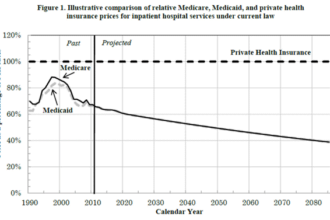In Hippocrates’s day, the environment was the primary cause of ill-health. Hippocrates describes in his treatise “Air, Waters, and Places” how unwholesome spaces, particularly those in cities, breed all manner of disease, and he encourages visiting more salubrious places, including his natural healing centers far removed from locales of everyday life. Unfortunately, in the years since the fourth century B.C.E., medicine has largely neglected the concept of the environment’s influence on health ― until recently. Today, we understand better than ever how one’s surroundings can inspire illness, and with the help of new technologies and ideas from other fields, public health professionals are gaining even more insight into how disease spreads through certain regions. These days, to understand the direction of public health studies, one must understand spatial analysis and geographic information systems (GIS).
What Is Spatial Analysis?
Put simply, spatial analysis is the study of spatial data. Spatial data include any information about geographic features, including their shapes, locations, and relationships. Various analytical techniques allow professionals to extract even more meaningful information from these data ― information that may be used to treat disease and save lives. Using geography to study humans is not particularly new, despite its relatively recent application to public health. Thus, pre-existing spatial modeling techniques exist, which many public health professionals use to better understand relevant spatial data. The most popular (and, usually, the most efficient) models are as follows:
- Overlay analysis. Overlay is by far the simplest form of modeling. It consists of layering maps containing different data in search of interaction between data sets. In public health, researchers use GIS to create maps of various risk elements, hazards, and spaces. The final combination usually shows the vulnerability of a region to a particular disease.
- Autocorrelation. Spatial autocorrelation assumes that the qualities of people in nearby regions will be more similar than the qualities of populations in distant locations. For example, the mortality rates in two neighboring suburbs of Los Angeles will be more similar than those of Paris and Hong Kong. This is a complex methodology, but it usually yields better control over confounding variables, thus enabling more informative studies.
- Interpolation. Interpolation is the inference of values between points to create an unbroken chain of information. As yet, researchers do not have access to data in every location on Earth, but using reliable network of monitoring stations, they can make accurate deductions for use in studies. There are several types of interpolation for use in different situations to generate the truest data possible.
How Does This Apply to Public Health?
Almost all health professionals make use of patients’ environments to understand their health status, but a few public health professionals rely on spatial data to improve health overall. Over the past decade, various studies have found overwhelming evidence that certain environments negatively and positively impact the well-being of large populations in various ways ― physically as well as psychologically. From disease caused by pollutants to factors influencing lifestyle choices, we have found that space and time matter to health. Spatial analysis is useful to a variety of fields inside and outside medicine. For instance, spatial epidemiologists study the variations in disease with respect to various location-based risk factors, while health geographers study the impacts of a place on health. Jobs in GIS are manifold, and those seeking degrees in the field will contribute invaluable research to our ever-growing understanding of the links between environment and health.
Where Can I Learn More About Health and GIS?
Public health programs are common enough at universities around the world, and as GIS becomes ever more vital to studying public health, more programs will offer opportunities for any public health student to delve into this emerging field. For now, most professionals in spatial analysis for public health seek advanced degrees before moving on to work in public or private practice. Meanwhile, a number of resources exist online for those with an interest in the field. Websites such as GIS Lounge provide excellent background on the techniques and technologies necessary to spatial analysis, and a team of computer engineers has released GRASS GIS, a free software, to help budding spatial analysts experiment with the real tools of modeling. One’s environment is a significant predictor of one’s health, and thanks to GIS spatial analysis, we are becoming more adept at deciphering those predictions every day. If only Hippocrates could see us now.






